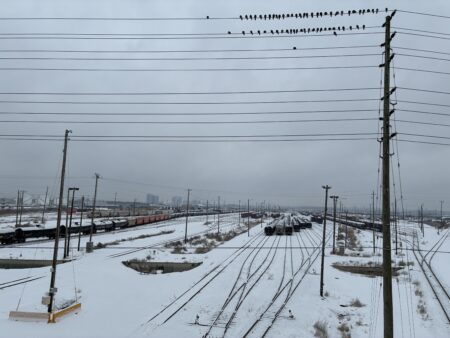‘What does love have to do with it?’ asked the late Pier Giorgio Di Cicco in his 2007 book, Municipal Mind: Manifestos for the Creative City. He was Toronto’s second poet laureate, from 2004 to 2009, and the book is his legacy project from that time. Di Cocco had a passionate, sometimes combustible-seeming connection to Toronto. A practicing Catholic priest, he wore black leather jackets and turtlenecks, smoked cigarettes, and spoke with a fantastic gravelly voice. A cool priest even, cooler than I ever knew from thirteen years of Catholic school. ‘A town that is not in love with itself is irresponsible, and civilly apt for mistakes,’ he wrote. ‘A citizenry is incited to action by the eros of mutual care, by having a common object of love — their city. A town that is not in love with itself will cut corners; lose sight of the common good.’
Love is also something you would be hard-pressed to find in official city statutes, but ask yourself if you love Toronto or whichever city you live in. Often the answer is no: cities are frustrating, but how can we care about something we don’t also love? In a section of Municipal Mind called ‘Restoring the Soul to the City,’ Di Cocco tried to conjure a Toronto that could be — something we could aspire to. ‘Developers are generally not known for their philosophical bent, but for their market enthusiasm,’ he wrote. ‘But it was a developer who told me the truest thing about cities: Speaking of Florence, a place that revitalized a civilization by a standard of civic care and design excellence, my friend remarked, “You know, Florence was already there, before a building ever went up.”
Toronto is certainly not Florence, and those with little imagination will dismiss the poetry about a city as useless, but Di Cocco was encouraging us to dream up an ideal Toronto that could be something to strive for as this place continues to grow and change. It could be about the architecture, but it also could be the sidewalks, more equitable and affordable housing, lusher parks, or ample public washrooms. Is Toronto living up to the city we dream of? From Di Cocco’s point of view, these collective ideals and visions are what make Toronto beautiful, rather than the stuff already built. It’s possible to dream of a better Toronto even while loving the current one. Perhaps it’s the only way to dream.
Micallef, Shawn. Stroll: Psychogeographic Walking Tours of Toronto. Updated Edition. Coach House Press, 2024. p. 15
Contrast with: This uncivil city



